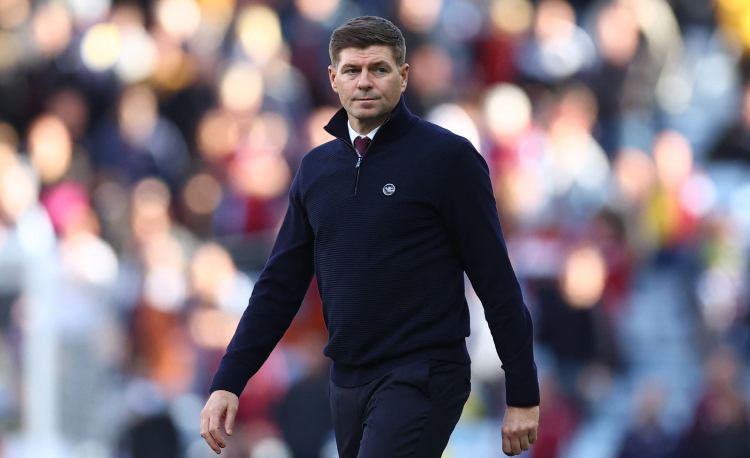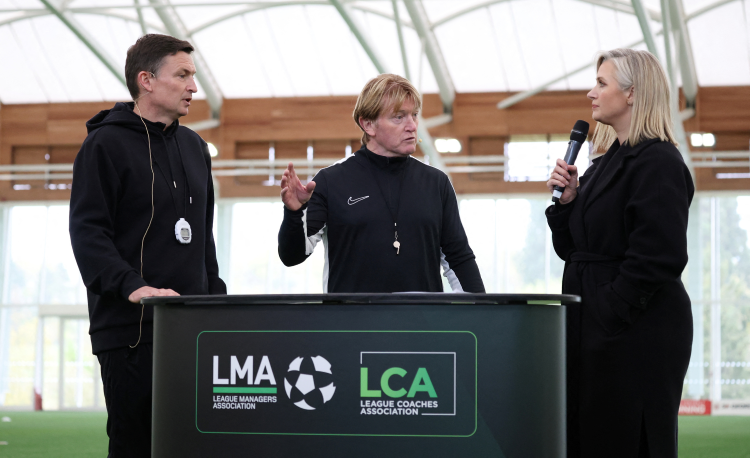You are viewing 1 of your 1 free articles
Match specific defending
Use this session to teach players the key points involved in being a solid defensive team – namely patience, and the ability to delay the opposition in order to allow for cover and support from team mates.
| Area | Up to 3/4 pitch |
| Equipment | Balls, cones (or poles), goals |
| No. of Players | Up to 20 |
| Session Time | 1v1s 5mins, 4v4s 5mins, 6v6s 5mins, Narrow or wide game 15mins |
This is a dedicated session that teaches players the key points involved in being a solid defensive team – namely patience, and the ability to delay the opposition in order to allow for cover and support from team mates.
Within this, we include the importance of good communication, and the acceptance that, at its heart, good defending is about players having strong 1v1 skills.
Players should build understanding as the session progresses, putting that into practice at the end with a 10v10 game.
What do I get the players to do?
1v1s
We begin as shown, on a half-pitch, with channels converging towards goal (1).
The coach serves out to an attacker. When he receives the ball, his immediate opposing defender must move in and press the man. The attacker has eight seconds to either shoot or cross the ball into inrushing team mates. Once the move ends, the coach serves in to a different attacker, until each man has had a turn.
1
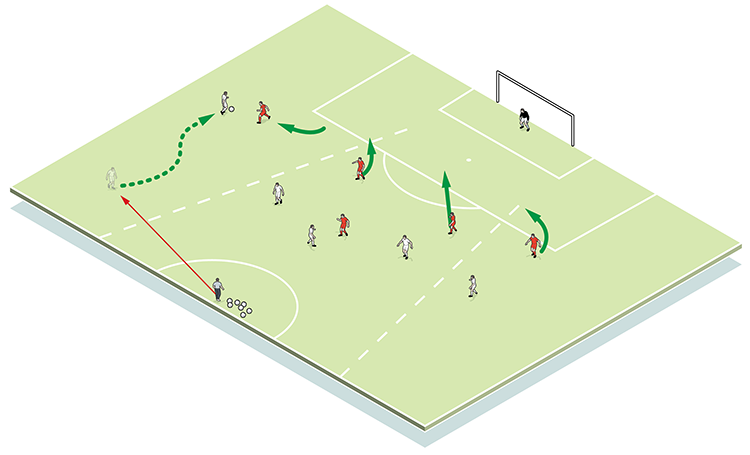
4v4s
For the next practice, we use only one channel line. This ‘cut off’ area can’t be crossed, meaning play is directed to one side of the pitch (2). There is no initial 1v1 – this is an immediate 4v4 clash, and the coach must vary passes to different attackers on each restart (3). Offsides count, and should defenders turn over possession, they can score a point by running the ball over the baseline.
2
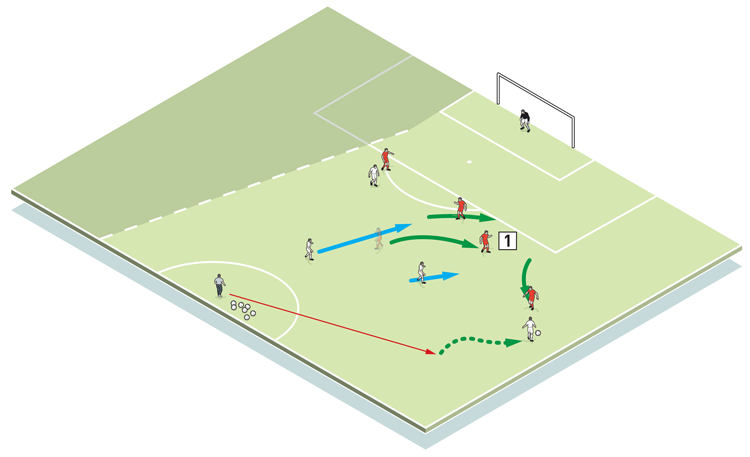
1. The holding midfield player drops back to support the full back and cover the run of the forward
3
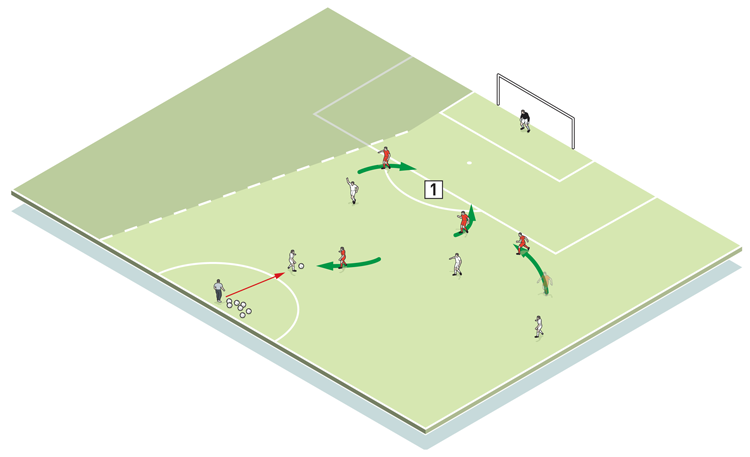
1. As the ball is played centrally, the midfield player presses, while the defenders drop off to compact the space in front of goal
6v6s
We now expand again, to a 6v6 game, with no marked restrictions. Defenders must follow the path of the ball and move as a unit (4), yet also compact themselves when the ball is in central areas, so defending the width of the goal (5).
4
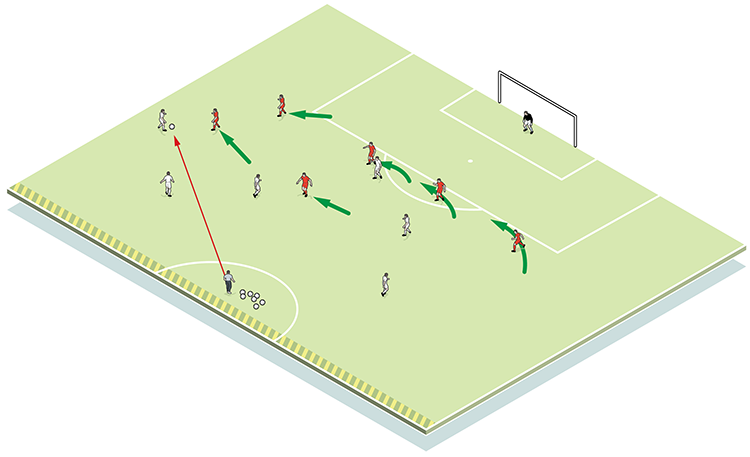
5
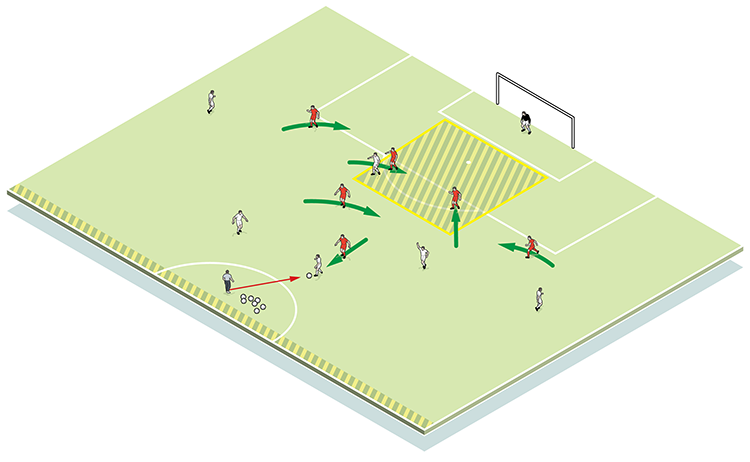
Narrow or wide game
Finally, we move into two thirds of a pitch – a central goal at one end and two 8-yard wide goals at the other (6). This is 10v10, with defenders having to counter narrow and wide attacking threats.
6
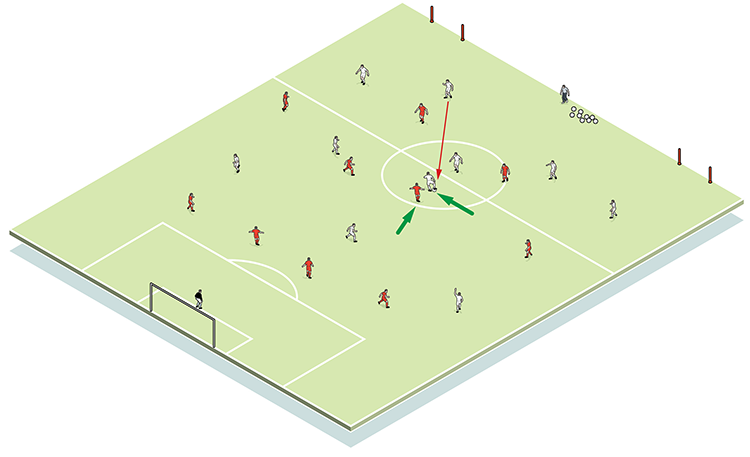
What are the key things to look out for?
Good defenders need to have excellent 1v1 skills; they must delay the opposition and pressure the ball to allow for cover and support. The nearest defender must always be the man to pressure, but strong team communication, a good mental attitude and considerable patience is essential in creating a resilient defensive unit.
Related Files
Editor's Picks
Using the goalkeeper in build-up play
Pressing principles
Intensive boxes drill with goals
Penetrating the final third
Creating and finishing
My philosophy
Pressing initiation
Compact team movement
Defensive organisation
Coaches' Testimonials

Alan Pardew

Arsène Wenger

Brendan Rodgers

Carlos Carvalhal

José Mourinho

Jürgen Klopp

Pep Guardiola

Roy Hodgson

Sir Alex Ferguson

Steven Gerrard
Related
Developing wide players
Principles in possession
Coaches' Testimonials

Gerald Kearney, Downtown Las Vegas Soccer Club

Paul Butler, Florida, USA

Rick Shields, Springboro, USA

Tony Green, Pierrefonds Titans, Quebec, Canada
Join the world's leading coaches and managers and discover for yourself one of the best kept secrets in coaching. No other training tool on the planet is written or read by the calibre of names you’ll find in Elite Soccer.
In a recent survey 92% of subscribers said Elite Soccer makes them more confident, 89% said it makes them a more effective coach and 91% said it makes them more inspired.
Get Monthly Inspiration
All the latest techniques and approaches
Since 2010 Elite Soccer has given subscribers exclusive insight into the training ground practices of the world’s best coaches. Published in partnership with the League Managers Association we have unparalleled access to the leading lights in the English leagues, as well as a host of international managers.
Elite Soccer exclusively features sessions written by the coaches themselves. There are no observed sessions and no sessions “in the style of”, just first-hand advice delivered direct to you from the coach.







